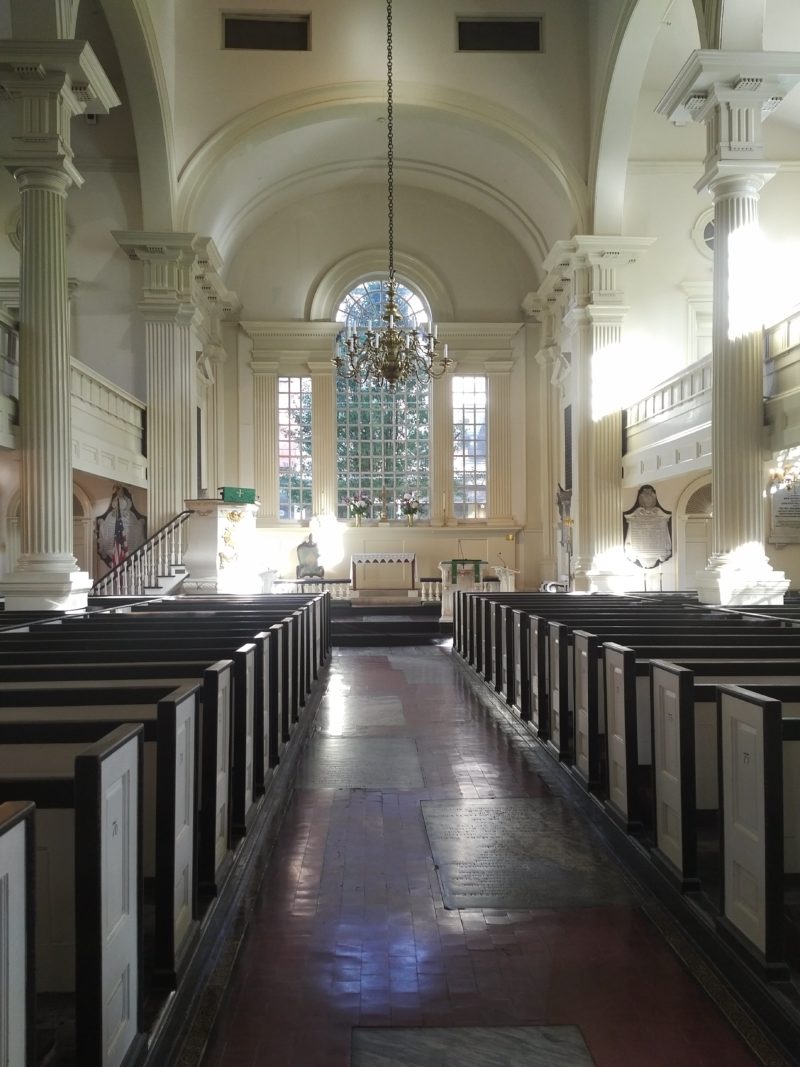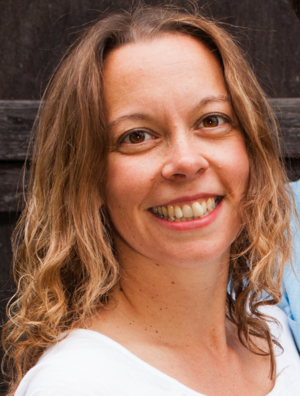Faith communities provide arts groups with much needed space
On an unseasonably warm (22 degrees!) November evening, myself and my partners from ArtsBuild Ontario and Toronto Arts Council set out on a walk across Philadelphia to Christ Church Neighbourhood House. This was the first of two trips to explore the ways in which arts groups are thriving within faith buildings and often in collaboration with faith communities. First stop (with many thanks to the George Cedric Metcalf Foundation), Philadelphia; guided by Faith & the Common Good’s friends and colleagues at Partners for Sacred Places, based in the United States.
The project began from a desire to see faith communities work in collaboration with the arts to create a richer and more sustainable experience for communities at large. My experiences as the General Manager of Trinity-St. Paul’s and as an Advisor with Faith & the Common Good have taught me that multi-use facilities can create an unparalleled community engagement experience. Our assumptions about those who are different from us are challenged, our connection with community increases as does our ability for collective action.
In Philadelphia, Partners for Sacred Places had connected our group with Christ Church. Founded in 1695, Christ Church is known as “the Nations Church,” due to the famous Revolutionary Era leaders who worshipped there. It was the first parish of the Church of England in Pennsylvania and the birthplace of the American Episcopal Church. It is a truly historic (and gorgeous church), filled with rays of crystal clear light, coming in through the plain glass windows to shine on white surfaces, silver organ pipes and grey gravestones.
We were attending Destiny Estimate by MJ Kaufmann at Christ Church Neigbhourhood House. Neighbourhood House was built in 1915 as an adjunct to the main church and with the express purpose of making space available to the community at large. Visionary for the time. In 1965 the Christ Church Preservation Trust was founded as a secular not for profit (501c3) to strengthen the communities that use Christ Church properties for community building, personal growth, educational and artistic expression. In other words, to support ALL OF MY FAVOURITE THINGS!

Destiny Estimate by MJ Kaufmann Design by Masha Tsimring and Katherine Fritz.
Destiny Estimate was taking place on the fourth floor in the 110-seat theatre, a large gym-like space with high ceilings, four large covered-over windows, and exposed brick. A lighting rig had been installed in the room and a dance floor laid. The play occupied the entire space using a 360-degree theatrical style with audience on all sides and about 40 people were in attendance on a Monday night. The play was a musing on the nature of the style and influences of various literary figures along with a consideration of mortality. If that sounds complicated, it was! It worked our brains in just the right way to begin our journey.
The next day we returned for a focus group with the space users and an enthusiastic exchange of ideas with Rector Tim.
How glorious to find like-minded people, engaged with the greater community, and loving the possibilities inherent in their place of faith! Christ Church has a dual organizational structure in order to enable the arts to pursue its own agenda separate from, but in conjunction with, the faith structure. Thus the Neighbourhood house (as mentioned) is a separately incorporated but linked charity. Neighbourhood House’s arts programming is managed by Abigail Guay, Program Director, and she popped in and out during our meeting, answering questions. It is supported by a number of charitable trusts and foundations, notably the original investment of the William Penn Foundation. Programming is both within the walls, but also in the Christ Church Sanctuary, and around the rest of the historic campus of Christ Church which includes a park area and a large, well-trafficked, grave yard. While we were visiting the organ was being refurbished in preparation for a series of commissioned concerts of new music. The project would also see school children coming to learn about the physics of the organ, supported by programming from the Franklin Institute and funding from the Pew Foundation. What a great opportunity to meld history, arts, youth education, and science into one holistic project!
Neighbourhood House functions on a combination of commissions, rentals, and supported arts events. Some arts projects are led by and defined by them. Some come to them and just rent space at a below market rate. Some are supported more broadly via available grants and the support of the Neighbourhood House staff.
Rector Tim and I spoke a great deal about the desire to enhance the profile of the arts without interference from faith. Obviously, there are moments of challenge in this vision, but a recurring theme throughout our journey was the degree to which communication could overcome disparate missions and approaches to community. Rector Tim consistently spoke of the desire to support that “which faith doesn’t regularly do.” Inspiring to hear about the search for ideas and moments outside of familiar faith boundaries, but within faith buildings. It enhanced my sense of the strength to be found in minimal spaces, places of meeting, boundaries between groups. More to come as we finish our explorations in Philadelphia and move onto New York. Stay tuned!


